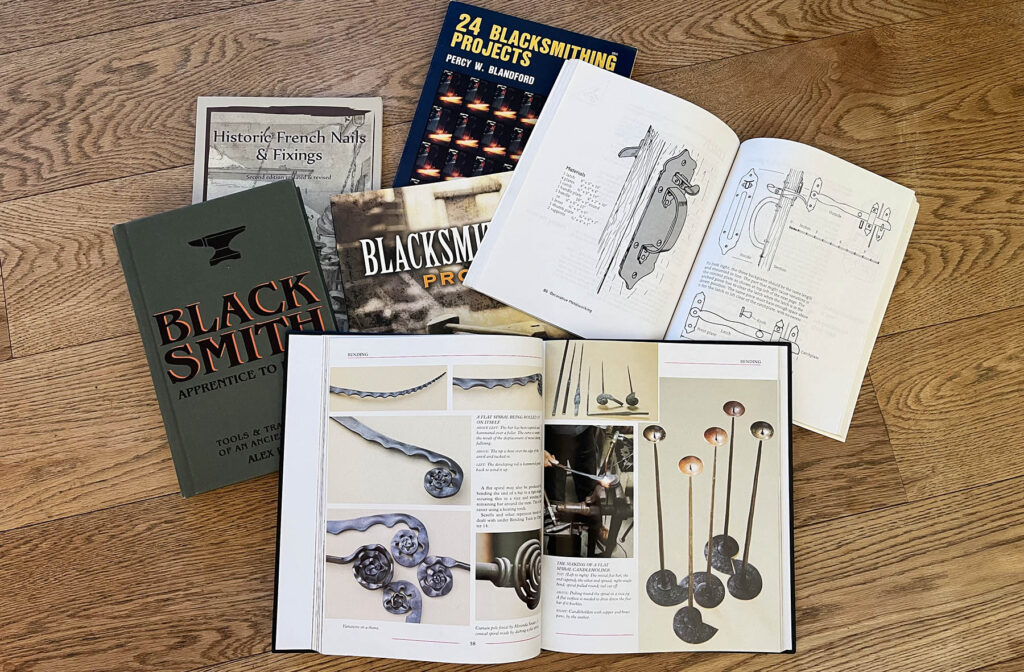A brief history:
 Blacksmithing is an ancient craft that dates back to the Bronze Age, around 3000 BC. It is the process of working metals like iron, steel and bronze by heating it to a high temperature and then shaping it with tools. Blacksmiths were essential to the development of civilization, as they were able to create tools and weapons that were far stronger and more durable than anything that could be made from stone or bronze.
Blacksmithing is an ancient craft that dates back to the Bronze Age, around 3000 BC. It is the process of working metals like iron, steel and bronze by heating it to a high temperature and then shaping it with tools. Blacksmiths were essential to the development of civilization, as they were able to create tools and weapons that were far stronger and more durable than anything that could be made from stone or bronze.
In the early days of blacksmithing, the process was very crude. Blacksmiths used simple tools and methods to heat and shape iron, and the quality of their work was often uneven. However, as the craft developed, blacksmiths became more skilled and their work became more refined. By the Middle Ages, blacksmiths were able to create a wide variety of objects, including weapons, tools, armor, and household items.
Blacksmithing reached its peak of importance during the Industrial Revolution. As factories began to spring up, blacksmiths were needed to create the tools and machinery that powered the new industrial age. However, with the rise of mass production, the demand for blacksmith-made goods began to decline. By the early 20th century, blacksmithing was largely a dying art.
In recent years, there has been a resurgence of interest in blacksmithing. People like myself are drawn to the craft for its beauty, its history, and its sense of craftsmanship. Blacksmiths today create a wide variety of objects, from traditional tools and weapons to modern sculptures and furniture. We are also involved in the restoration of historic buildings and artifacts.
Blacksmithing is a fascinating and ancient craft that has played an important role in the development of civilization. It is a skill that is still practiced today by a dedicated group of people who are passionate about preserving this tradition.
Here are some of the historical importance of blacksmithing:
- Blacksmiths were responsible for creating the tools and weapons that were used in warfare. This included swords, spears, arrows, and armor.
- Blacksmiths also made tools for farming and other industries. This included plows, axes, hammers, and nails.
- Blacksmiths created household items such as hinges, locks, and furniture.
- Blacksmiths were also involved in the construction of buildings. They made nails, hinges, and other metalwork that was used in construction.
- Blacksmiths were respected members of society. They were skilled craftsmen who were essential to the development of civilization.
Blacksmithing is a fascinating and important craft that has a long and rich history. It is a skill that is still practiced today by a dedicated group of people who are passionate about preserving this tradition.
A Farrier is a specialist focused on equine hoof care. While they use blacksmithing skills to make and modify horseshoes, their primary role involves trimming and balancing hooves and applying shoes to ensure the health and soundness of a horse’s feet. Farriers combine metalworking with knowledge of equine anatomy.
Worth noting:
The key difference between a blacksmith and a whitesmith lies in the type of metals they work with and the kind of objects they create:
-
Blacksmith: These metalworkers deal primarily with ferrous metals, meaning those containing iron. Blacksmiths work with iron and steel in their unrefined forms. The intense heat of their forges allows them to shape these metals into strong, durable objects. Typical products of a blacksmith include tools (hammers, nails), weapons (swords, horseshoes), and structural elements (gates, fences).
-
Whitesmith: In contrast, whitesmiths focus on lighter-colored metals, particularly tin and pewter. These metals have lower melting points than iron and steel, so they don’t require the same extreme heat. Whitesmiths often create more delicate and intricate items, like:
- Tinware (pots, pans, plates)
- Sheet metalwork (lampshades, decorative objects)
- Locks and keys
- Finer tools for detailed work
Think of it this way: blacksmiths are the heavy-duty construction workers of the metal world, while whitesmiths are the artisans and tinsmiths.
It’s important to note that these terms are somewhat historical. Today, a single metalworker might have the skills of both a blacksmith and a whitesmith, depending on the project.
